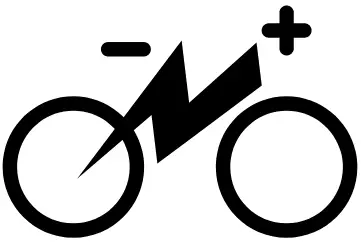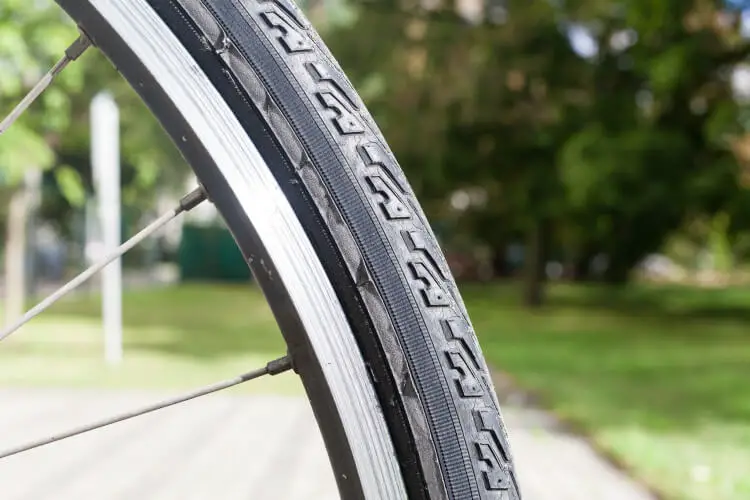Finding the exact tube size for your bike can be a tricky process. Perhaps you have an older bike or a bike with an unusual tire size. Or you have a bunch of inner tubes left over from a previous bike and wondering if they can fit your new bike.
So does your inner tube and tire need to match exactly? No, tubes and tires don’t need to match exactly. Tubes are made from butyl rubber which can stretch. Bike inner tubes will accommodate a limited range of sizes. Larger tubes may be more susceptible to getting pinched between the tire and rim.
It’s always best to try and match as closely as you can, but there is some flexibility. Having a slightly smaller or larger tube will be quite fine. While a bike wheel can accommodate a limited range of tire and tube widths, getting the right tube diameter is essential for avoiding flats.
How Close Does Tube Size Need to Be?
When it comes to matching tubes and tires, there’s a little wiggle room. This is because tubes stretch and will cover a range of sizes.
Some manufacturers, such as Schwalbe, even give a range for their tubes:
Only high elasticity and good quality allows a tube to cover very many tire sizes. Tube No. 17 can fit tire widths between 28 mm and 47 mm and that is a big advantage to the trade and simultaneously it vouches for the tube’s quality.
schwalbetires.com
Another reason is due to a lot of variation when it comes to manufacturer’s labeling. A tube that one manufacturer might label 23-28, another one might label the same size as 25-32.
And to make matters even more confusing, some manufacturers may even lie about their tire width. Tires may have a measurement on the outside, like 25mm, but with thick treads and sidewalls, it may be much narrower than 25mm on the inside.
With such variations, it’s best practice to try and match up your tube and tire by looking at the measurement on the side of the tire.
Bigger Tube in Smaller Tire
Some cyclists have used bigger tubes in smaller tires just fine. However, there are some disadvantages to be aware of.
The biggest disadvantage is installation. During installation, you want to be especially careful not to catch the tube under the tire bead. This is especially true when you are repairing a flat on the road or trail.
Another disadvantage is ride quality. If the inner tube is a lot larger than the tire, it will cause folds and wrinkles inside the tire, which may affect your ride. If you have a tube that is only a little bit larger, then it probably won’t make a difference.
While larger tubes will weigh more, they will retain air better. Because the inner tube is less stretched, the walls are thicker which prevents air loss. If you’re a rider who checks their tires regularly, this might not matter.
Some rides have been using larger tubes with no issues:
I’ve sometimes used tubes that were way too large without any ill effects. That includes using a tube for a 27″ tire in a 20″. It had to be folded over on itself but the wheel rode fine. I road this way daily for a long time until I got a proper size tube.
Smaller Tube in Bigger Tire
While you want to try and match up tubes and tires as closely as you can, there are advantages to using a smaller tube.
One of the biggest advantages is weight savings. Going with a smaller tube could save ~20 grams of weight per tube.
While the weight savings are nice, one drawback is the loss of tire pressure. Smaller tubes become stretched and don’t hold air quite as well.
Some rides will say a smaller tube that is stretched will be more prone to punctures. This may sound true in theory, but I suspect that it doesn’t really make a difference.
The type of tire, pressure, riding style, etc will have much more of an effect on preventing flats. However, if you are concerned, there are puncture-resistant tires and other options on the market.
Another advantage, aside from weight savings, is the space savings. Smaller tubes are just easier to tuck in pockets.
As for the smoothness of the ride, smaller tubes will be a little lighter and ride more supple.
Here’s what a few riders have experienced using smaller tubes:
I used 23mm tubes in 28mm tires for over 10,000 miles with no problem. They lose air in a fewer number of days but most people seem to pump up their tires every ride anyway.
I’ve been using the smaller tubes for several years and many thousand miles with no problems.
Which Is Better? A Smaller or Larger Tube?
It’s tough to say if a smaller or larger tube is better. While the advantage of a larger tube may be better air pressure and possibly durability, they are much harder to replace.
Most cyclists will prefer a smaller tube for the weight savings and ease of installation. If you stay fairly close in sizing, these differences will be minimal.
What About Patched Tubes? Will They Stretch?
There may be times you’re in a real pinch and must use a patched tube, or perhaps you’re trying to save money (see how much does a bike tube cost).
In either case, you really have to be careful using patched tubes that aren’t the right size. With a smaller tube that is patched, you can expect a much higher failure rate.
Smaller patched tubes fail more often because as the tube stretches during inflation, the patch does stretch. This stretch puts a lot of pressure on the patch making it more susceptible to failure.
If you’re very careful with applying patches, you may be able to get away with this, but it’s certainly not a good long-term solution.

